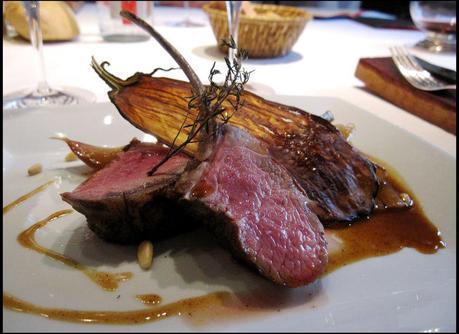 I have previously discussed the importance on eating in season, but this focus is usually put on fruits and vegetables. Did you know that meat is seasonal as well?
I have previously discussed the importance on eating in season, but this focus is usually put on fruits and vegetables. Did you know that meat is seasonal as well?
The seasonality of meat is based on how naturally animals eat, hibernate, reproduce, etc. Animals need the time to consume food and process it in a way they can healthily add weight. Unlike in factory farm methods that try to make animals forcefully gain weight at an unhealthy pace with unhealthy feed (or corn), pasture raised animals are also healthier for us to eat. Factory farming also forces unnatural lighting situations so animals cannot know what time of year or day it is. This causes chickens to constantly produce eggs and cows to constantly produce milk. Seasonality is especially true for pasture raised cattle since they are dependent on grass as their main source of feed. Turkeys, chickens and pigs are not solely dependent on grass since they are all omnivores but they are still seasonal when it comes to butchering.
Here are the specifics:
Chicken: it depends. Young whole chickens are available April until late fall. Stewing chickens are available in March and October. Generally chickens and their products are not available during winter times, or at a higher cost during the winter.
Eggs are in season from March through November, when laying hens produce the most. This is because the shorter daylight impacts their internal clocks and causes them to produce fewer eggs during the winter months.
Milk is in season from February to June. This is when dairy cows produce more than average. According to Choice magazine, consumption of milk was higher during its off season, this can cause sustainability issues for the cattle and dairy industry.
Beef is in season in the winter months, after they have been eating grass all summer long and obtaining the necessary Omega 3s. According to one article, winter is also when our bodies need beef over other months.
“In the height of summer, we’ve been consuming lots of fresh vegetables, so our bodies are in balance,” says Noble. “What we need to do is take that into the winter so you have the right mix of nutrients, and grass-fed meat can do that.”
Pork is in season in the late fall and winter. It is preferred to butcher pigs during colder times to make it easier to preserve the meat. In the same way as with beef, during the winter is also when people need to eat more meat for caloric intake, so it is a better time to slaughter animals during the winter.
In conclusion, the common meats such as beef and pork are in season during the winter months, chicken is in season during the spring as well as eggs and dairy. If you want to eat meat when it is not traditionally in season, try keeping meat in a deep freeze for year round use.
Hopefully as you transition yourself into eating less meat, you will also consider eating more in season.
[Image source]

